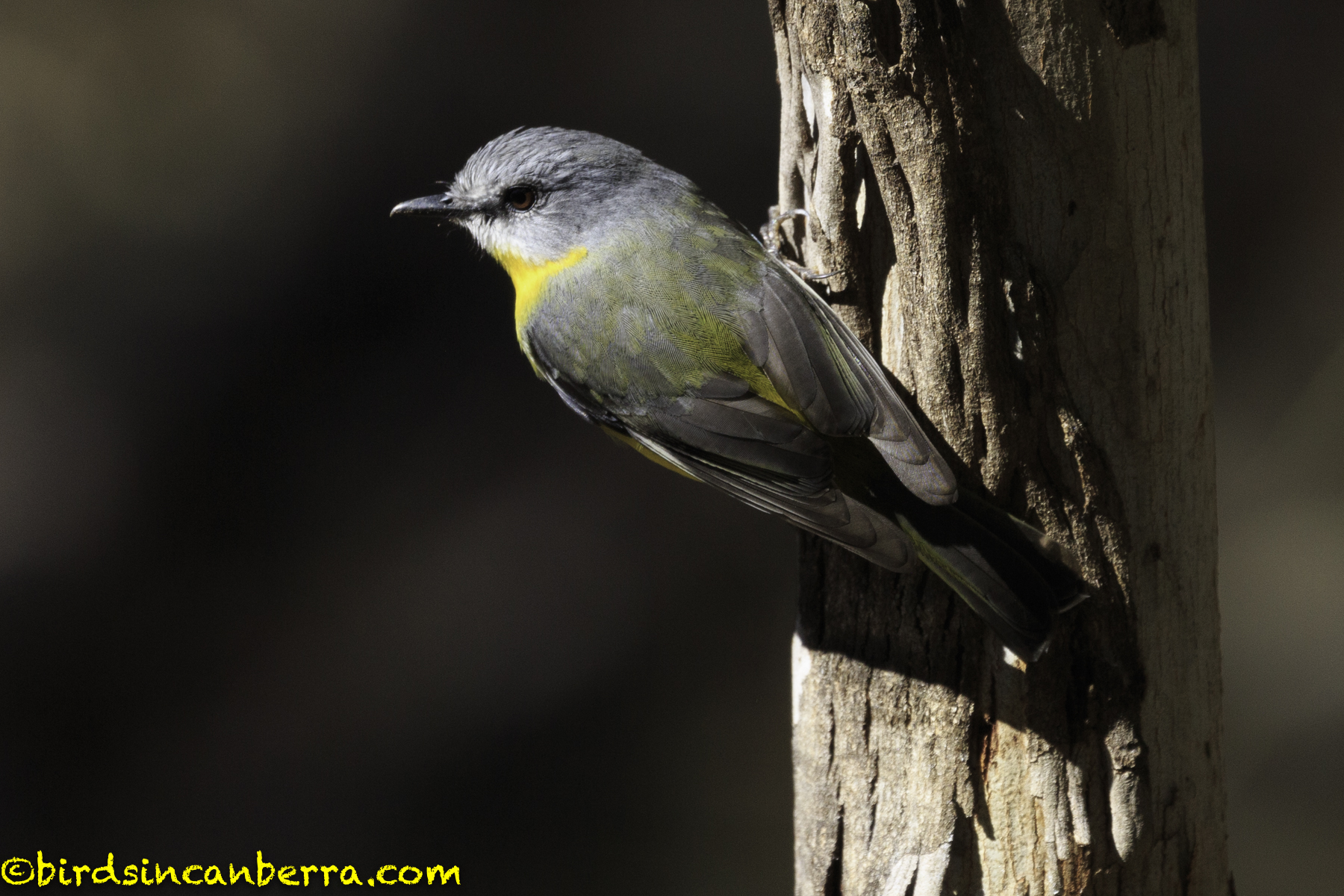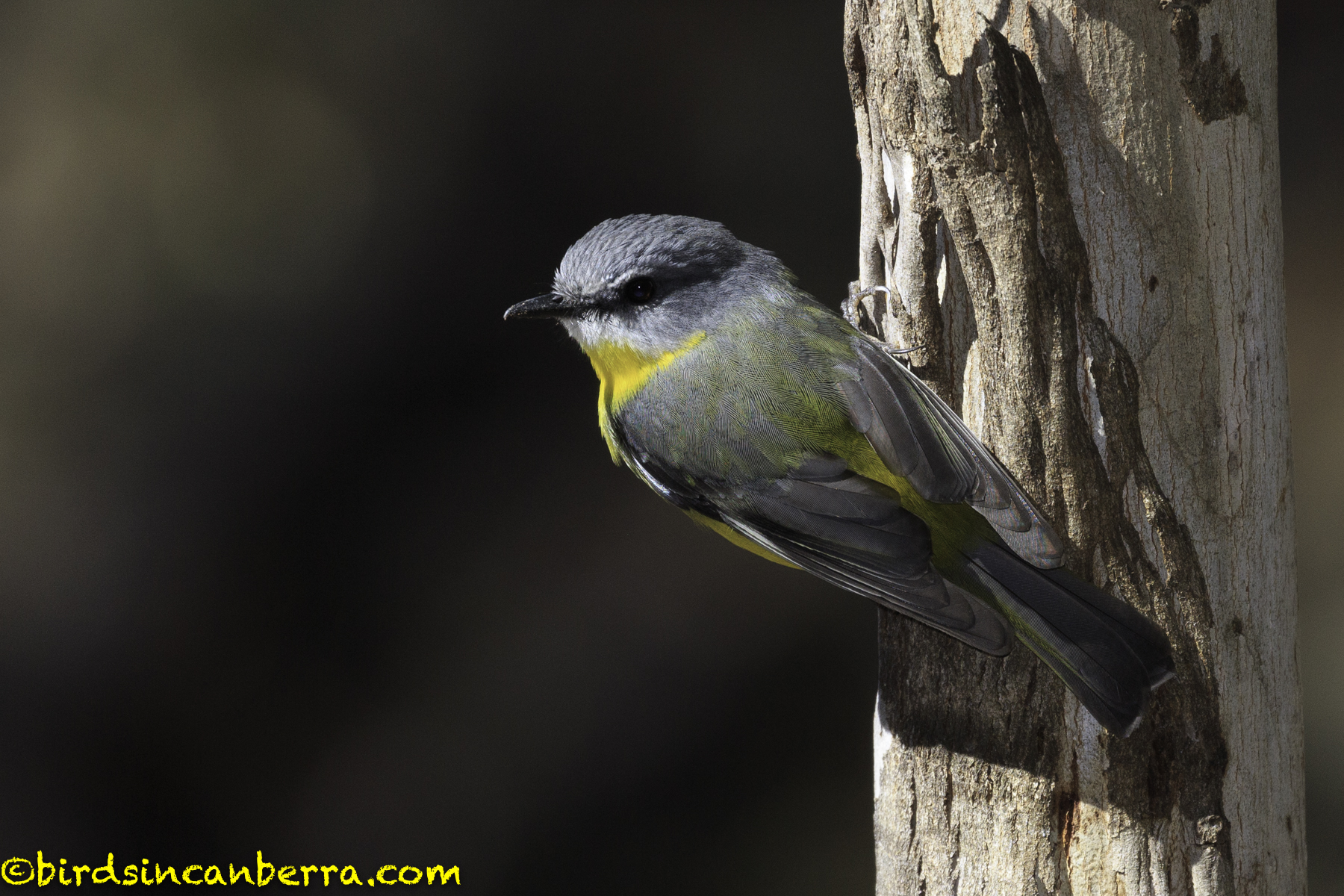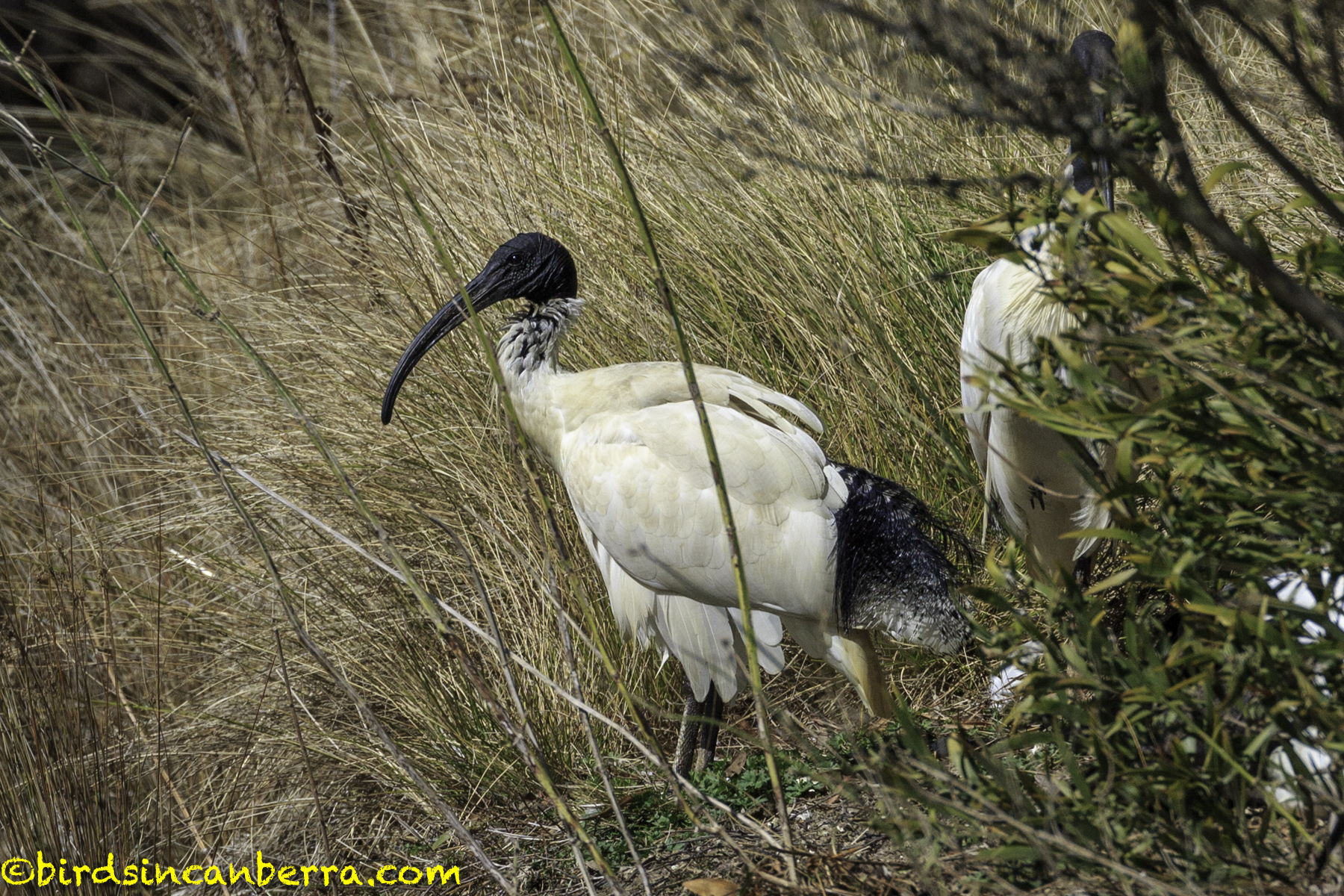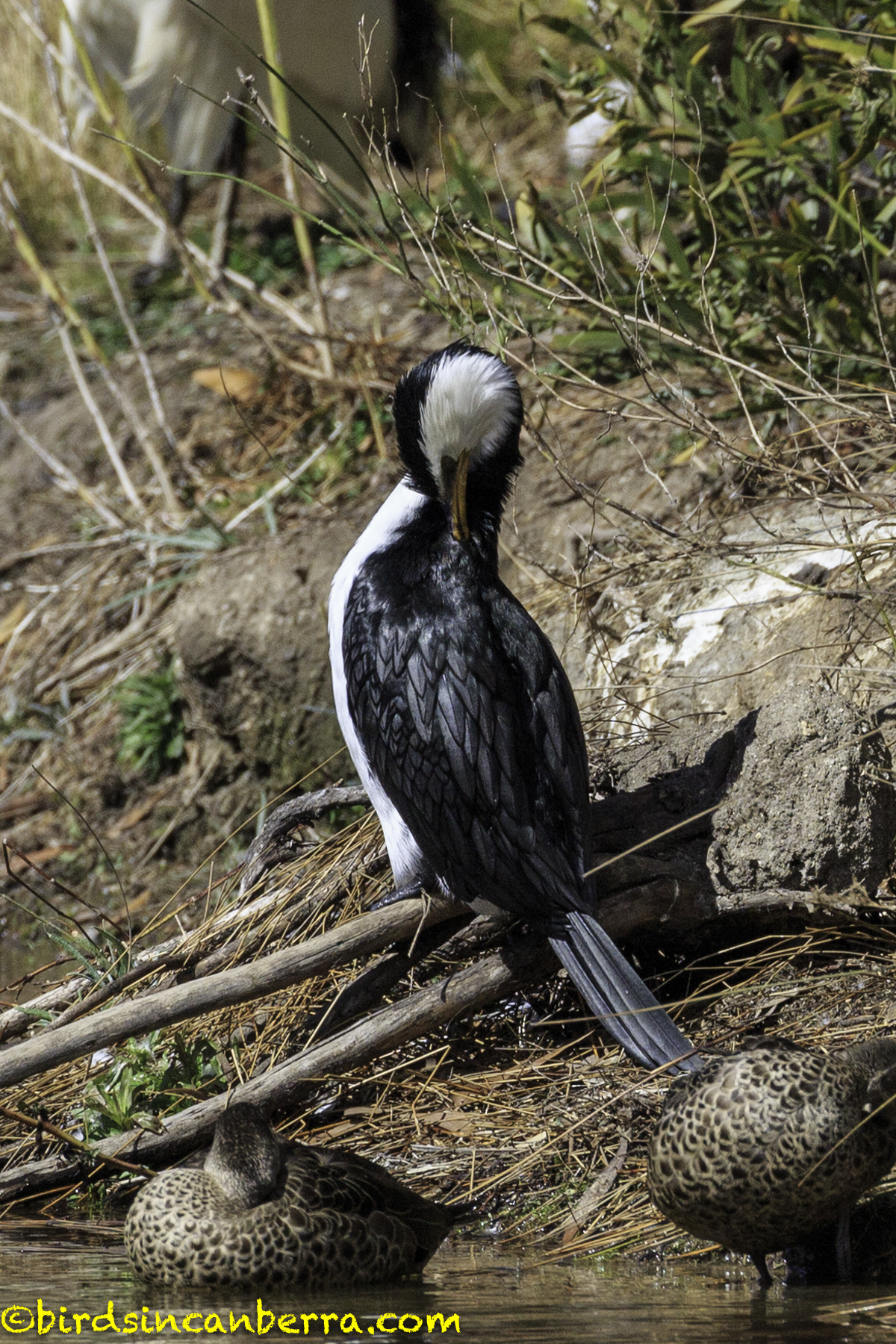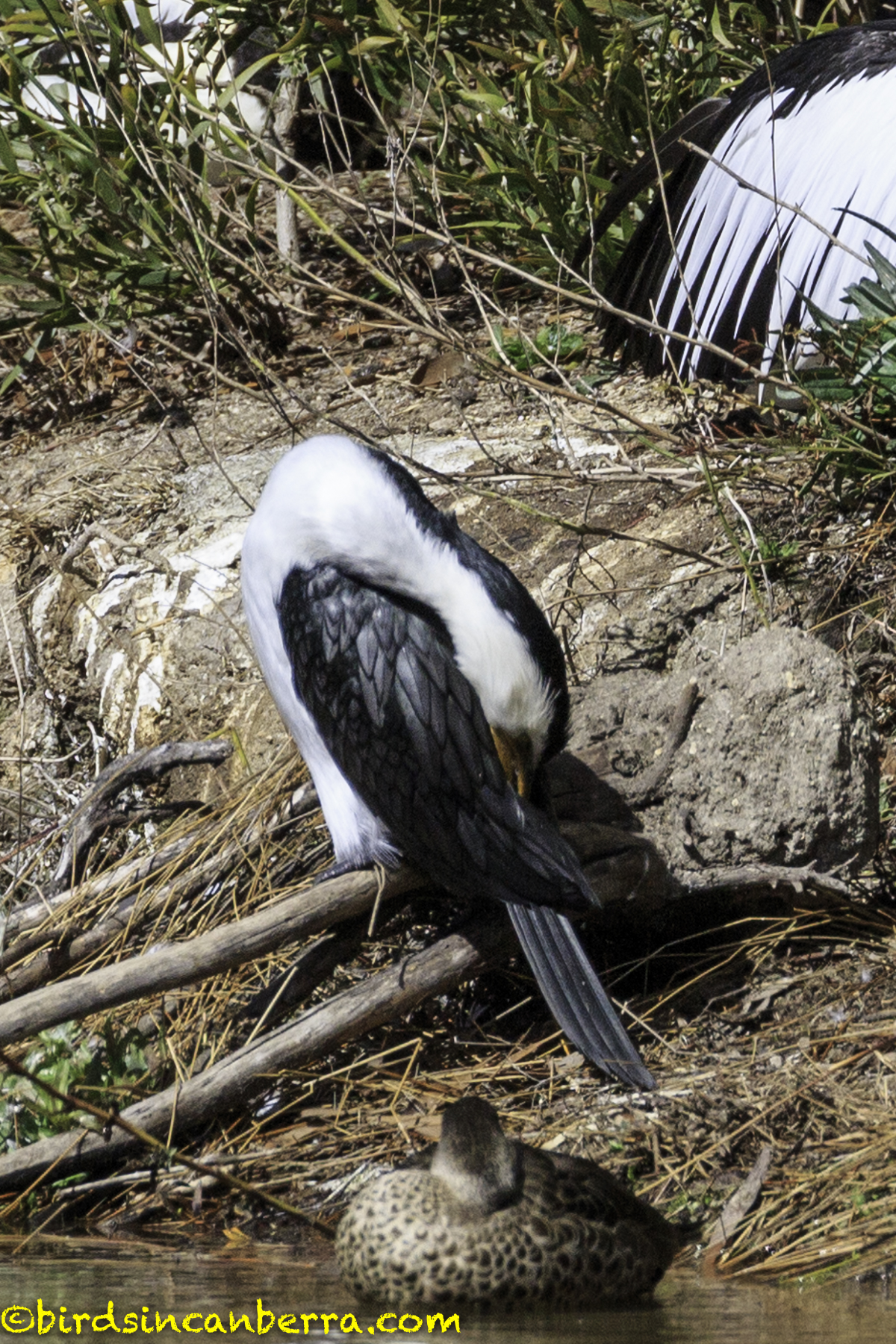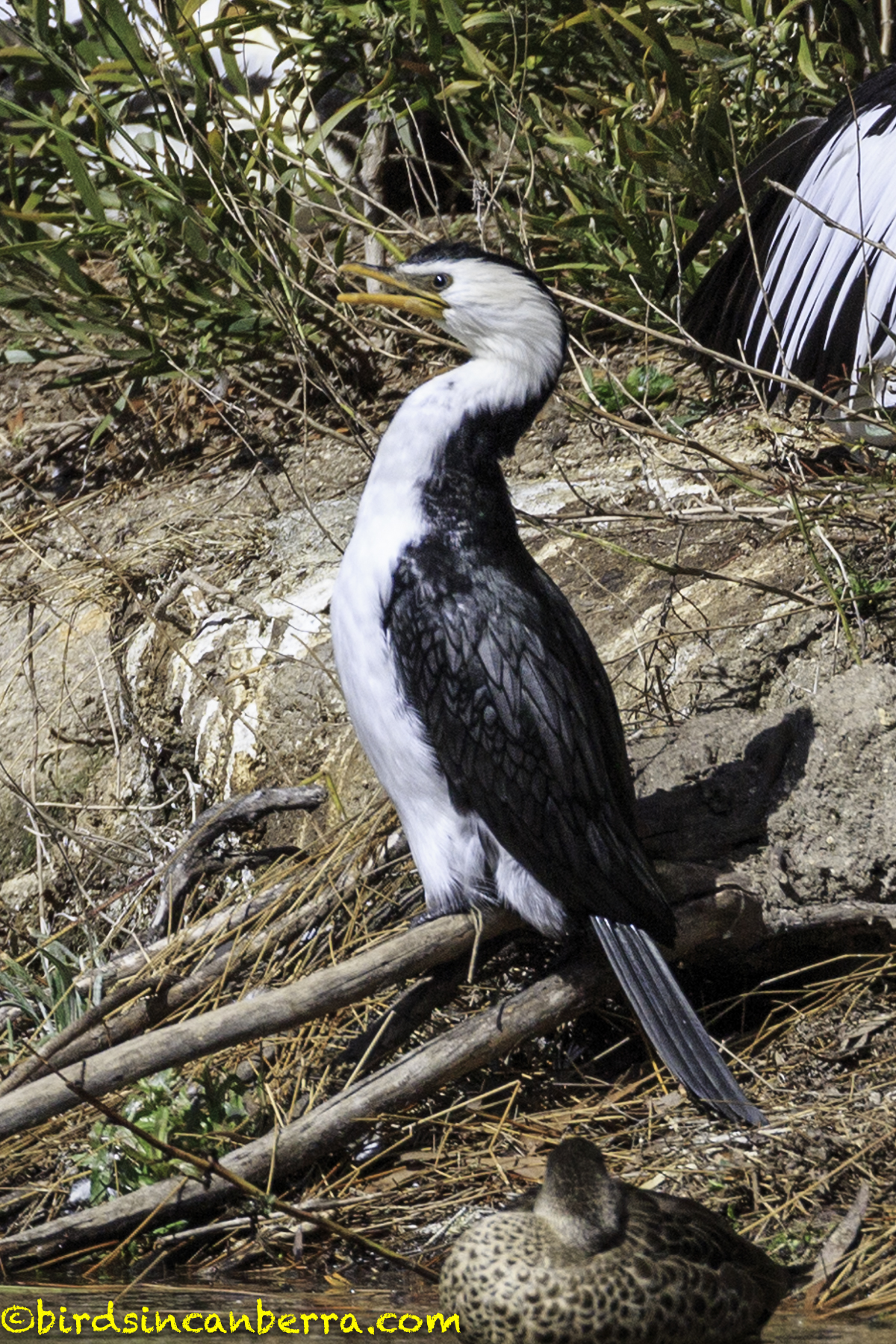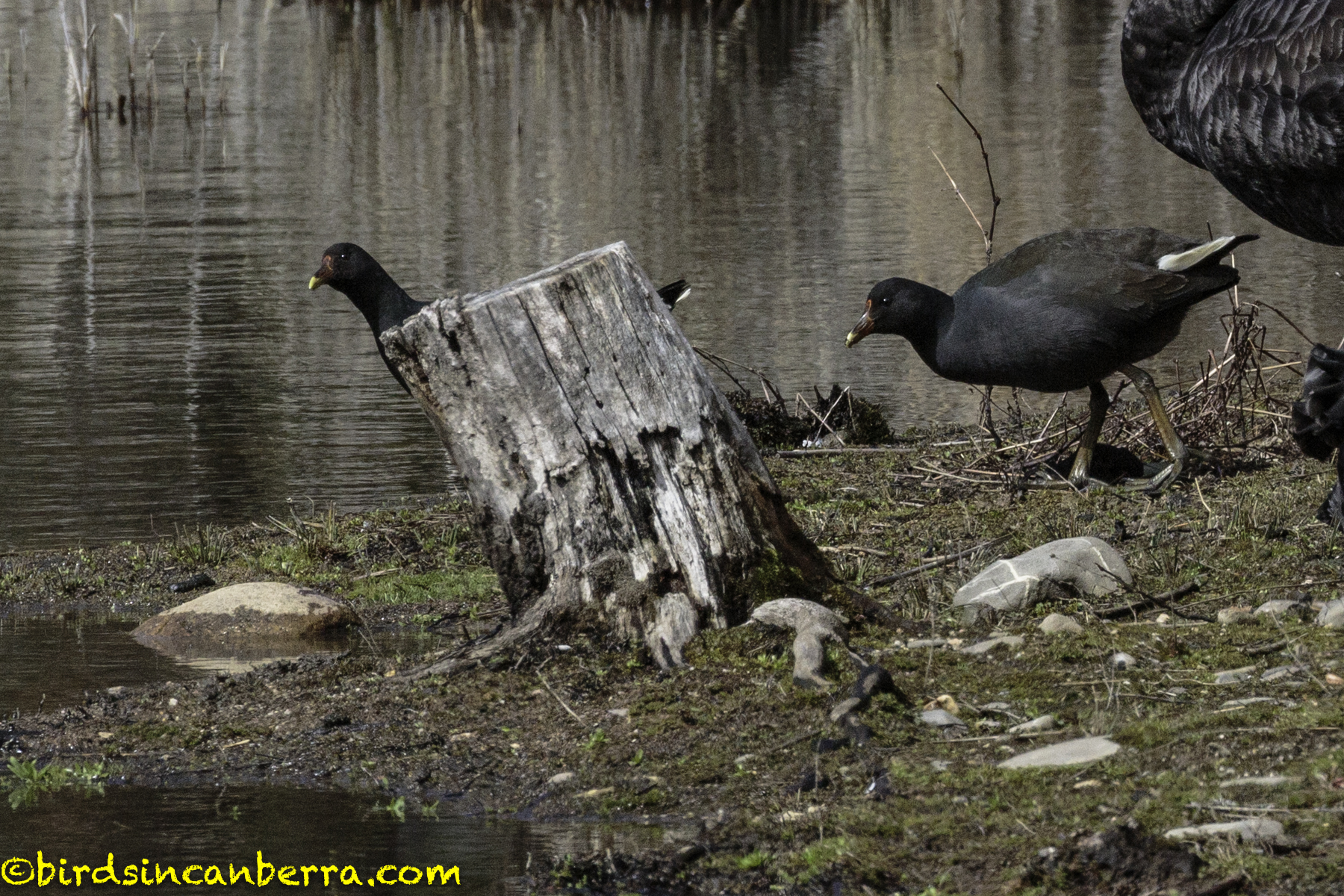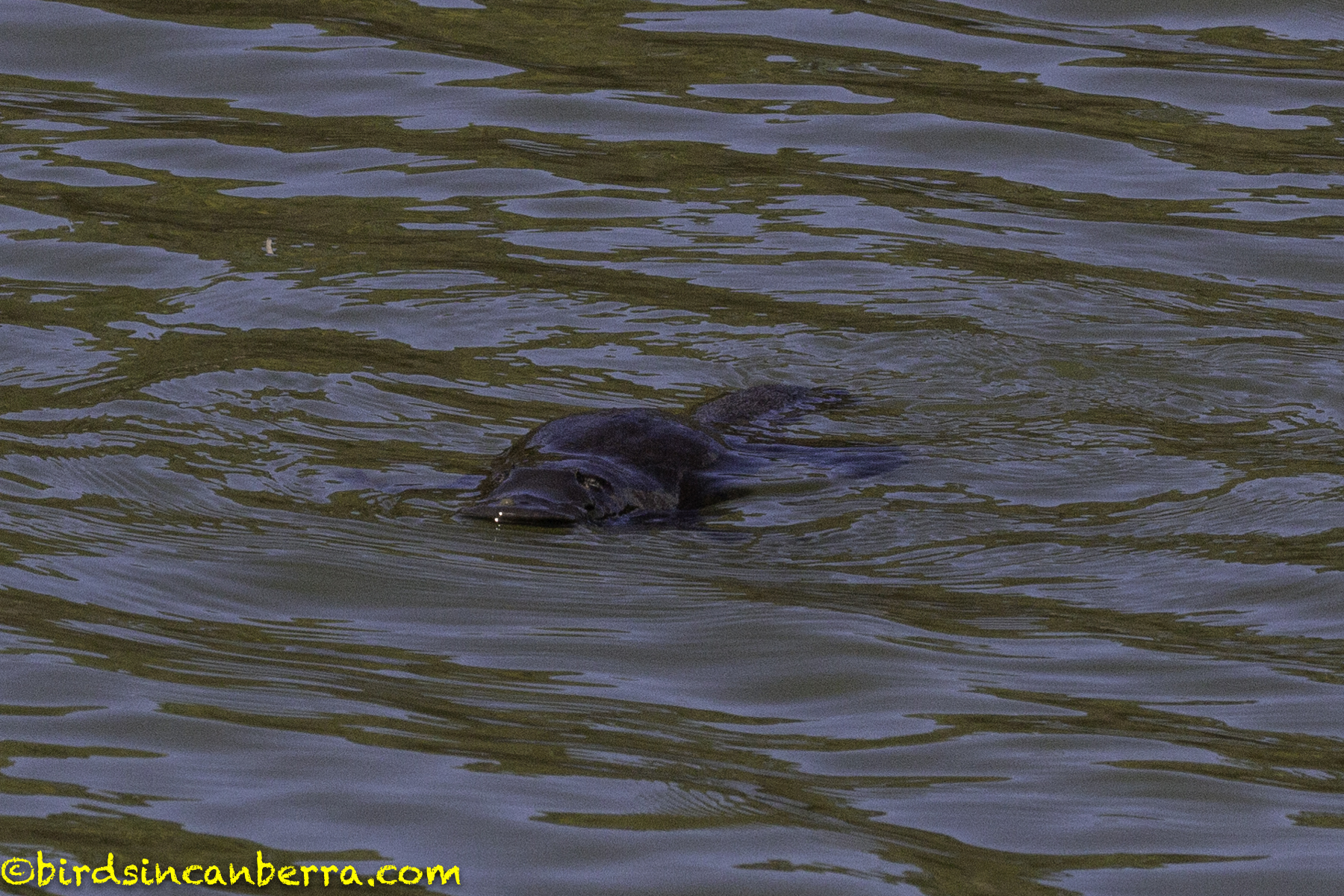Tidbinbilla Nature Reserve is a large national park about 30 minutes drive south of where I live. It is situated in a valley with the Tidbinbilla River running through it. I convinced my son to come with me on Saturday to go for a walk around the fenced-in sanctuary that sits in the middle of the reserve. This is a predator proof area centred on a wetlands habitat giving wild native fauna communities a chance to live without the threat of feral animals. The native fauna have the run of the sanctuary while humans are confined to well maintained paths. We had an enjoyable morning seeing so many wild birds, platypus and even a turtle. My son is not really into wildlife but agreed he would like to go back again, which is good as I bought an annual pass :-)
The first bird I was able to photograph was very near the entrance, a couple of White-browed Scrubwrens. They were so quiet, so unobtrusive a couple walking near us completely missed them. The birds looked like they were foraging in the leaf litter. They did not seem perturbed by any human presence, not even avoiding the paths.
There was also a group of Superb Fairy-wrens although the breeding male did not make an appearance. I was able to photograph this non-breeding male. I assume he will not breed this season as his plumage is still brown with no indication of it changing to blue.
Non-breeding male Superb Fairy-wren
I saw a single Purple Swamphen heading into some reeds. Maybe there was a nest further in or maybe it was not breeding.
Coming back south along the loop, just past the research centre I was able to get a photograph of an Eastern Yellow Robin who posed perfectly on a tree, turning perfectly to catch the light. I had seen one of these birds almost as soon as we walked in but it was too hard to get a photograph. The final two photographs were taken near the exit when I had better luck taking a photograph. I love the rich, yellow plumage.
On the small island in one of the ponds were several water birds including a solitary Australian Pelican. This is the largest water bird in Australia. The second photo gives a bit of an idea about how large its mouth can be. Its mouth is able to take large items of food, including other birds. The Australian Pelican has the longest beak at almost 50 cm. This bird was basically resting. It was preening its feathers possibly ahead of sleeping.
The Australian White Ibis has developed a bad reputation in cities for its scavenging behaviour so it was nice to see them in a natural surrounding where they are not begging for food. These two were preening themselves, although they were also moving around. Their featherless head gives them a sinister look, which does not help their reputation.
I am so glad I was able to get these pictures of a Little Pied Cormorant. I see this species of bird frequently on my way to work but I do not have my camera with me so I have never taken a photograph of it. I snapped a lot of phtographs as the bird went through its preening behaviour. It was giving itself a thorough cleaning.
There was also the ubiquitous Pacific Black Duck. I snapped a landing duck quickly but it is still just out of focus. It was a reflex photograph more than one I was able to prepare for. I will get there one day.
I did not realise when I was taking photographs of the collection of birds on the small island there was also a group of Magpie Geese sleeping. This species is gradually spreading south in their distribution although the consensus is these birds are semi-wild having most likely come from a flock that was in captivity before a fire swept through the area over 15 years ago. I would have liked to have seen these birds up and moving but I will take them like this.
There was also a pari of Dusky Moorhen wandering around the pond. Given the duller bills and front shields these may not be breeding yet.
Finally, at the pond there was a Black Swan pair, which may also be semi-wild, although they were the only two Black Swans I have seen in Canberra that did not approach humans waiting to be fed.
As we were heading out of the sanctuary I could see some Striated Thornbills in a tree but they were not coming too close. I was resigning myself to not being able to get a photograph when one of them landed on a branch in front of me. I was able to get a single shot before it flew off but I was more than happy with the result.
Leaving the visitors centre at the sanctuary I saw a White-throated Treecreeper fly onto a tree. It was in the shadow and I was photographing through a number of branches so the images are not great but I think it is still easy to identify the species. This is my first treecreeper so I was happy even if the images are not the best.
We were lucky on the day as the Platypus were active. I thought I had missed my opportunity to photograph them as I was too late to photograph one when we were on the far side of the sanctuary. Fortunately, on the way back there was one out feeding.
One of the very kind rangers out and about that day also pointed out this Eastern Snake-necked Turtle taking it easy in some reeds.






